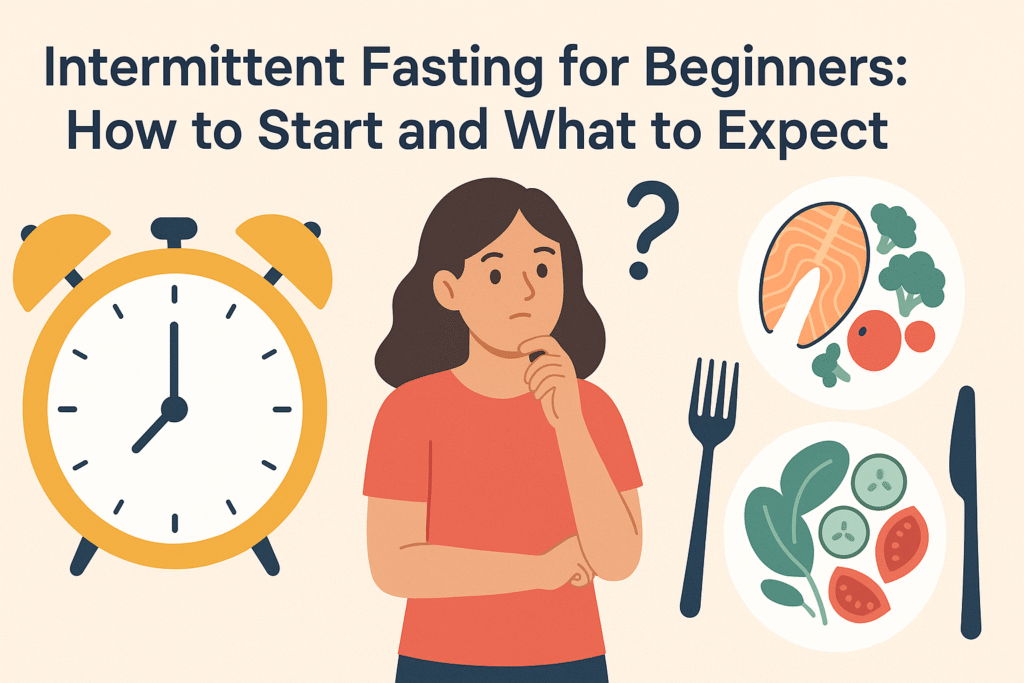Intermittent fasting (IF) is an eating pattern that cycles between periods of eating and fasting. Many people find it helpful for weight management, simplifying meals, and improving metabolic health. Here’s a practical, balanced guide to starting IF and knowing what to expect.
What IF means and common approaches
– 12:12 — 12 hours fasting, 12 hours eating. Good starting point.
– 14:10 — 14 hours fast, 10 hours eating. Gentle next step.
– 16:8 — 16 hours fast, 8 hours eating. One of the most popular methods.
– 5:2 — Eat normally 5 days a week; restrict calories (~500–600) on 2 nonconsecutive days.
– Alternate-day fasting — Fast every other day (full fast or limited calories).
– OMAD (one meal a day) — Very short eating window (about 1 hour). More extreme.
How to choose a method
– Start with something simple (12:12 or 14:10). If that’s comfortable, progress to 16:8.
– Pick an eating window that fits your lifestyle (e.g., 10:00–18:00 or 12:00–20:00).
– Consider your work, training schedule, social life, and sleep—consistency matters more than the exact window.
Step-by-step plan to get started
1. Decide on an approach: Begin with 12:12 for a few days, move to 14:10 for a week, then try 16:8 if you feel ready.
2. Set consistent times: Choose a daily fasting/eating schedule and stick with it for at least 2–4 weeks before judging results.
3. Focus on quality meals during eating windows: Prioritize protein, vegetables, whole grains or starchy vegetables, healthy fats, and fiber to support satiety and nutrition.

4. Stay hydrated: Drink water, black coffee, and unsweetened tea during fasting windows. Electrolytes can help if you feel lightheaded.
5. Avoid the “binge” mentality: Don’t overeat or load up on processed foods during the eating window—IF is not a license for low-quality calories.
6. Track progress: Note weight, how you feel, energy levels, sleep, and hunger. Consider baseline bloodwork if you have health concerns.
What to expect (timeline and common experiences)
– First few days: Hunger pangs, irritability, headaches, low energy. These are normal as your body adapts.
– Days 3–14: Many people report fewer food cravings, more stable appetite, and clearer thinking as ketone production and insulin sensitivity improve.
– Weeks to months: Potential weight loss if you maintain a calorie deficit, and improvements in markers like fasting glucose or blood pressure for some people. Energy and appetite often stabilize.
– Long-term: Sustainability is key. Some maintain IF indefinitely; others use it cyclically for weight or metabolic goals.
Practical tips for common issues
– Strong hunger: Drink water, green tea, or black coffee. Distract yourself briefly (walk, task). If hunger persists, consider shortening the fast.
– Low energy or dizziness: Pause intense exercise, eat a nutritious meal, check electrolytes, and consult a clinician if symptoms are severe.
– Sleep problems: Avoid caffeine late in the day and keep consistent sleep timing. If IF disrupts sleep, try moving the eating window earlier.
– Social situations: Shift your window occasionally or plan meals that fit social events. Flexibility helps long-term adherence.
Nutrition and exercise guidance
– Protein: Aim for adequate protein each meal (helps preserve muscle during weight loss).

– Vegetables and fiber: Promote fullness and nutrient density.
– Balanced meals: Include moderate carbs and healthy fats; don’t rely exclusively on low-carb unless that fits your goals.
– Exercise: Light to moderate cardio is fine while fasting. Strength training is beneficial—many prefer to do it toward the end of the fast or during the eating window and consume protein afterward to support recovery.
Who should be cautious or avoid IF
– Pregnant or breastfeeding people.
– Children and adolescents.
– People with a history of eating disorders.
– People who are underweight, frail, or older adults with frailty.
– Those on certain medications (e.g., insulin or sulfonylureas for diabetes) — fasting can cause dangerous low blood sugar.
– Anyone with uncontrolled chronic health conditions should consult their healthcare provider before starting.
How to measure success
– Non-scale metrics: Improved energy, better sleep, reduced cravings, looser clothing, improved mood.
– Scale and body composition: Weekly weigh-ins can be useful; remember weight fluctuates day-to-day.
– Health markers: If possible, monitor blood pressure, fasting glucose, lipids, and discuss results with a clinician.
Sample beginner schedule (progression over 2 weeks)

– Days 1–3: 12:12 (e.g., eat 7:00–19:00).
– Days 4–10: 14:10 (e.g., eat 9:00–19:00).
– Days 11–14: 16:8 (e.g., eat 11:00–19:00). Continue this or adjust up/down based on comfort.
Common mistakes to avoid
– Thinking fasting alone guarantees weight loss—quality and quantity of food still matter.
– Overcompensating by eating high-calorie processed foods during the eating window.
– Rapidly jumping to extreme fasting schedules without adaptation.
– Neglecting hydration and electrolytes.
– Ignoring warning signs like persistent dizziness, fainting, or cognitive impairment.
When to stop and seek help
– Stop or modify fasting if it causes severe fatigue, fainting, faint-like episodes, mood disturbances, or impacts daily functioning.
– Seek medical advice if you’re on medications, pregnant, breastfeeding, or have chronic health conditions.
Final notes
Intermittent fasting can be a flexible tool for many people to manage eating patterns, appetite, and weight. Start slowly, pay attention to how your body responds, prioritize nutrient-dense meals, and consult a healthcare professional if you have medical concerns. Consistency, not perfection, is the key to sustainable results.

